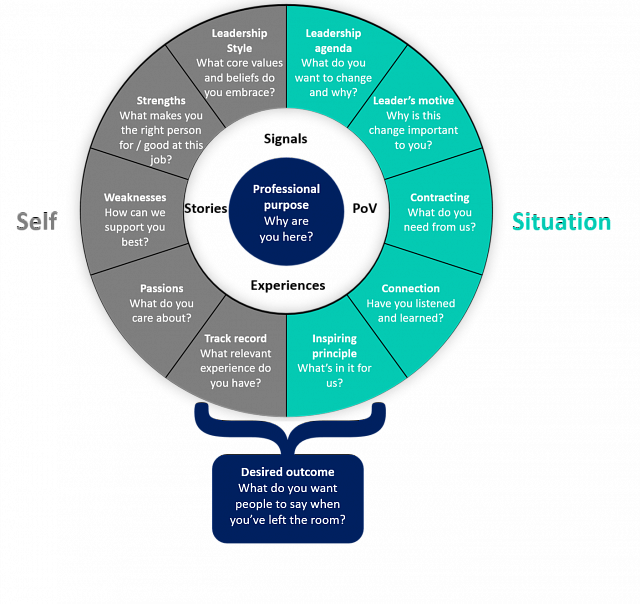Here’s a fun exercise… think back to some of the things you’ve heard people say about their leaders.
Things like…
- ‘He’s got a brain the size of a planet but absolutely zero empathy’
- ‘I respect her, but I wouldn’t want to sit next to her on a long-haul flight’
- ‘Beware – he’ll tell you what you want to hear then do something completely different’
Or my favourite…
- ‘I reckon she reads accountancy books in bed’
Typical, and all real I should add.
As Jeff Bezos so pithily puts it, ‘your leadership narrative is what people say about you when you’ve left the room’. But is this something that can and should be actively managed, or should it just be the natural result of the way a leader operates?
I would make the case that it’s an essential element of successful leadership. A leader who doesn’t know their guiding principles and beliefs is a ship without a compass. On the other hand, a leader who can articulate these and live by them has not just a compass, but also a chart and a course.
A strong and compelling leadership narrative can build that most essential of qualities, trust. It’s when a leader is consistent in their words and actions, particularly under duress, that we begin to really believe in them, and trust blossoms. And it’s no surprise these are the leaders who can most effectively inspire and influence.
In contrast, those leaders who don’t actively manage their leadership narrative tend to fall back on the authority that comes with the role. The problem these leaders experience is what I call the ‘you would say that wouldn’t you’ syndrome. In effect, the role is doing most of the talking, and that makes it easy to ignore. It also means that much of the leader’s influence is lost as it runs into the resistance and skepticism that is rife in many large organisations.
If you hear comments along the lines of ‘we’ve seen and heard all of this stuff before and nothing ever changes’, then you’re likely looking at leaders who are letting the role do the talking.
As communicators, it is our job to help leaders turn down the volume of the role and instead increase the emphasis on more personal communication. This is absolutely not about some ego-infused trip, but rather about the team getting to know and understand who’s leading them and as a consequence, building belief and trust in this leader.
If you agree with this analysis, the logical conclusion suggests it’s a good idea for a leader to have a clear picture about who they are and what they stand for. I find the model below can be a powerful tool in supporting this conversation between leader and communicator.

When a leader uses this as his or her source material, it creates a very different, and much more personal ways of communicating. Rather than the usual ‘you would say that wouldn’t you’, or worse, the recycled press release, we get a personal perspective – a point of view, personal judgment, emotional connections and inspiring insights brought to life through experiences, examples and proof-points.
And then it’s about thinking through how this narrative comes to the surface. The last thing I’d advocate is a ‘let me tell you about my leadership principles’ kind of chat. Instead, it’s about taking real-world, relatable experiences, ideas and situations, and using these to bring to life both the leader and their leadership agenda. If this narrative infuses every aspect of a leader’s communication – in team interactions, stakeholder conversations, social media content, external profiling and more – then the chances are people might just say what you’d hope them to say when the leader leaves the room.
